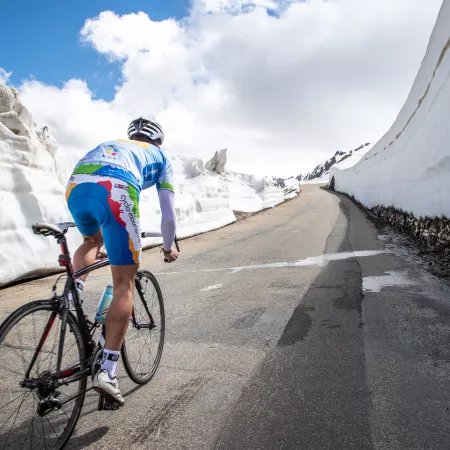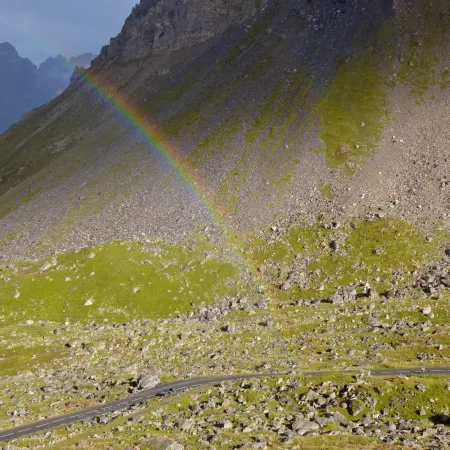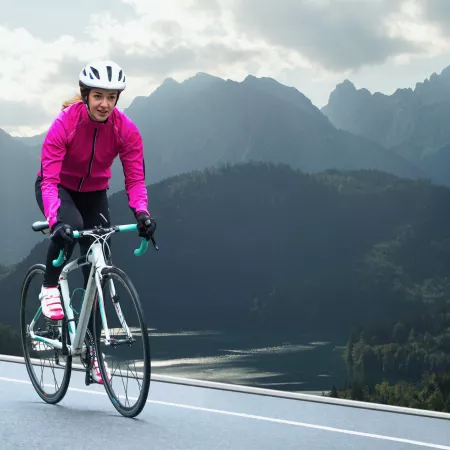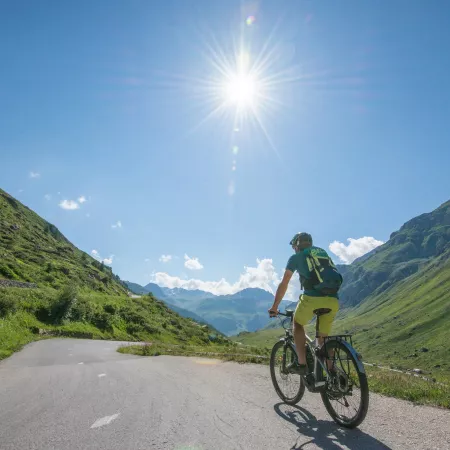At what time of the year should you tackle the Route des Grandes Alpes®?
The Route des Grandes Alpes® is a cycle route through high-altitude mountains.
The precise time of year at which the route opens up in its entirety depends on amounts of snowfall. Up in the mountains, you can’t take anything for granted. So, before heading off, make sure to check on the state of the roads and on which passes are open or closed, especially when it comes to the highest ones. If certain passes are closed, make use of the alternative sections proposed to get around the issue. For information before you head out, consult: www.infotrafic.com or tourist offices on or close to the cycle route.
What’s the best time at which to head out on the Route des Grandes Alpes®?
The two best periods at which to head out on the Route des Grandes Alpes® are at the start or end of the main summer season: from mid-June (by which time most passes will be open) to mid-July, or from late-August to mid-October. September often proves to be a very good month for cycling, even if daylight hours are fewer. We do not recommend tackling the route in August, as car traffic is often very busy, which can make cycling unpleasant, or even dangerous at times.
Why choose the start or end of the summer season?
First, because these periods are less busy with tourists than during the main French summer holiday period (14 July – 15 August, in essence). Traffic is less frantic and you can cycle along more peacefully. In addition, temperatures are not as warm, making for better conditions for your cycling trip.
What weather should you be prepared for?
In the mountains, any weather is possible, especially at higher altitudes! Certain images of Tour de France cyclists blocked by snow or hit by a storm come to mind… So, please do consult the French meteorological service before heading out, looking at Météo France mountain weather reports on: www.meteofrance.com/meteo.montagne. The telephone no. +33 (0)8 99 71 02 + the number of the French county you’re cycling through enables you to access directly all county-level weather forecasts (€2.99 per call + price of a call with your provider).
At what periods are the major passes open?
Certain passes on the route normally stay open pretty much year-round: Gets, Aravis, Saisies, Télégraphe, Lautaret, Vars, Cayolle, Saint-Martin, Turini and Castillon. As to the other major passes, most tend to open end May. But the very highest, notably the Iseran, Galibier and Izoard passes, only open from mid-June, or even from 20 June, if there’s still a significant amount of snow present. Most of the major passes then stay open to end October. They generally close as soon as the first snows fall, something that varies according to altitude, latitude and seasonal weather. Just because certain passes are closed doesn’t mean you can’t tackle the route. Remember, some of the alternative sections, or then the valley-bottom roads, allow you to bypass such obstacles along the way.




